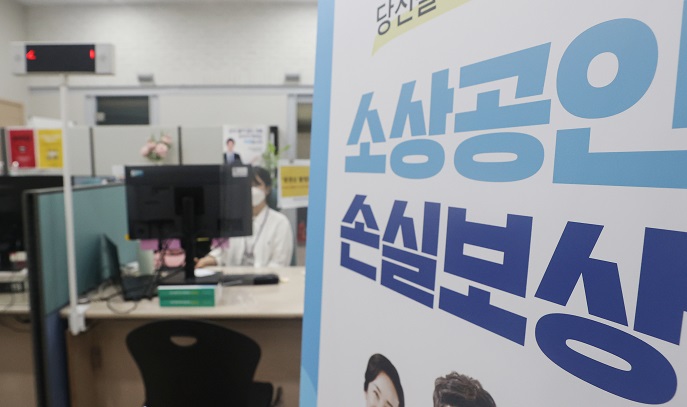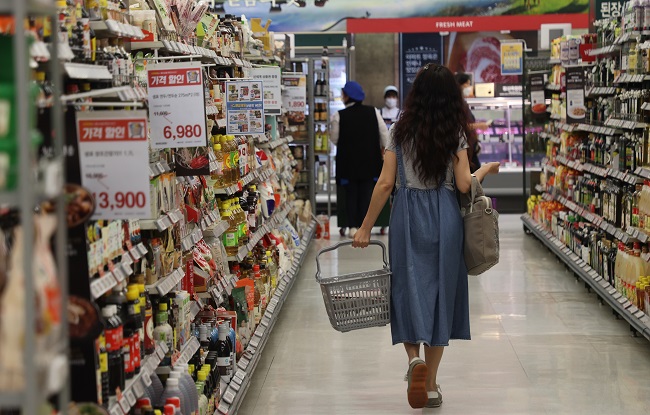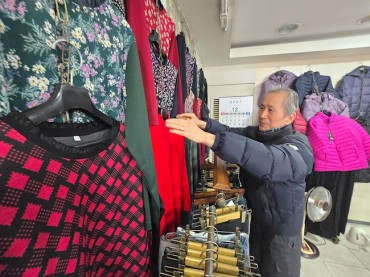
This file photo, taken June 30, 2022, shows a banner set up at an agency designed to support small merchants in Seoul that says pandemic-hit merchants can apply for state compensation for their losses caused by the government’s virus restrictions. (Yonhap)
SEOUL, Aug. 18 (Korea Bizwire) — Household income rose at the fastest pace on record in the second quarter due largely to pandemic-related cash handouts, but households’ propensity to consume hit a record low amid high inflation, data showed Thursday.
The average household earned 4.83 million won (US$ 3,700) per month in the January-June period, up 12.7 percent from a year earlier, according to the data from Statistics Korea.
It marked the fastest on-year increase since 2006, when the statistics agency began compiling related data. Household income also grew for the fourth straight quarter.
In the second quarter, household income grew on the back of an improvement in the job market and the provision of state compensation to pandemic-hit merchants, the agency said.
The lifting of virus curbs also helped revive the in-person service segment, a sector hit hard by the COVID-19 pandemic.
Income earned through wages rose 5.3 percent on-year to an average of 2.89 million won per month. The monthly average income from business operations increased 14.9 percent to 927,000 won.
Transfer income backed by state support soared 61.5 percent to 679,000 won, as the government offered compensation to small merchants for their losses caused by tough virus curbs with the record extra budget of 62 trillion won created in May.

This file photo, taken June 27, 2022, shows people shopping for groceries at a discount store chain in Seoul amid high inflation. (Yonhap)
Despite the increase in income, households’ average propensity to consume, measured by the percentage of consumption expenditures out of disposable income, fell for the fourth straight month, as high inflation and rising interest rates cut into their purchasing power.
The average propensity to consume came to 66.4 percent, down 5.2 percentage points from the previous year. It was the lowest figure for any second quarter since 2006.
Household spending of consumption goods rose at the fastest pace in 12 years in the second quarter as consumers spent more due to rising prices of goods and services, the data showed.
The average monthly consumption expenditures rose 5.8 percent on-year to 2.62 million won.
When adjusted with inflation, households’ real consumption expenditures inched up a mere 0.4 percent on-year, the slowest rise in 15 months. This means households effectively did not boost consumption.
Meanwhile, the income gap between the haves and have-nots widened for the first time in four quarters in the second quarter.
The average monthly income of the bottom 20 percent income bracket rose 16.5 percent on-year to 1.13 million won. In comparison, households in the upper 20 percent income group earned 10.32 million won, up 11.7 percent from a year ago.
The country’s distribution ratio for disposable income, a key barometer of earnings equality, reached 5.6 in the second quarter, up from 5.59 the previous year. A higher ratio means increased inequality in income distribution.
It means that the top 20 percent income bracket had 5.6 times more earnings than those in the bottom 20 percent over the cited period.
(Yonhap)






